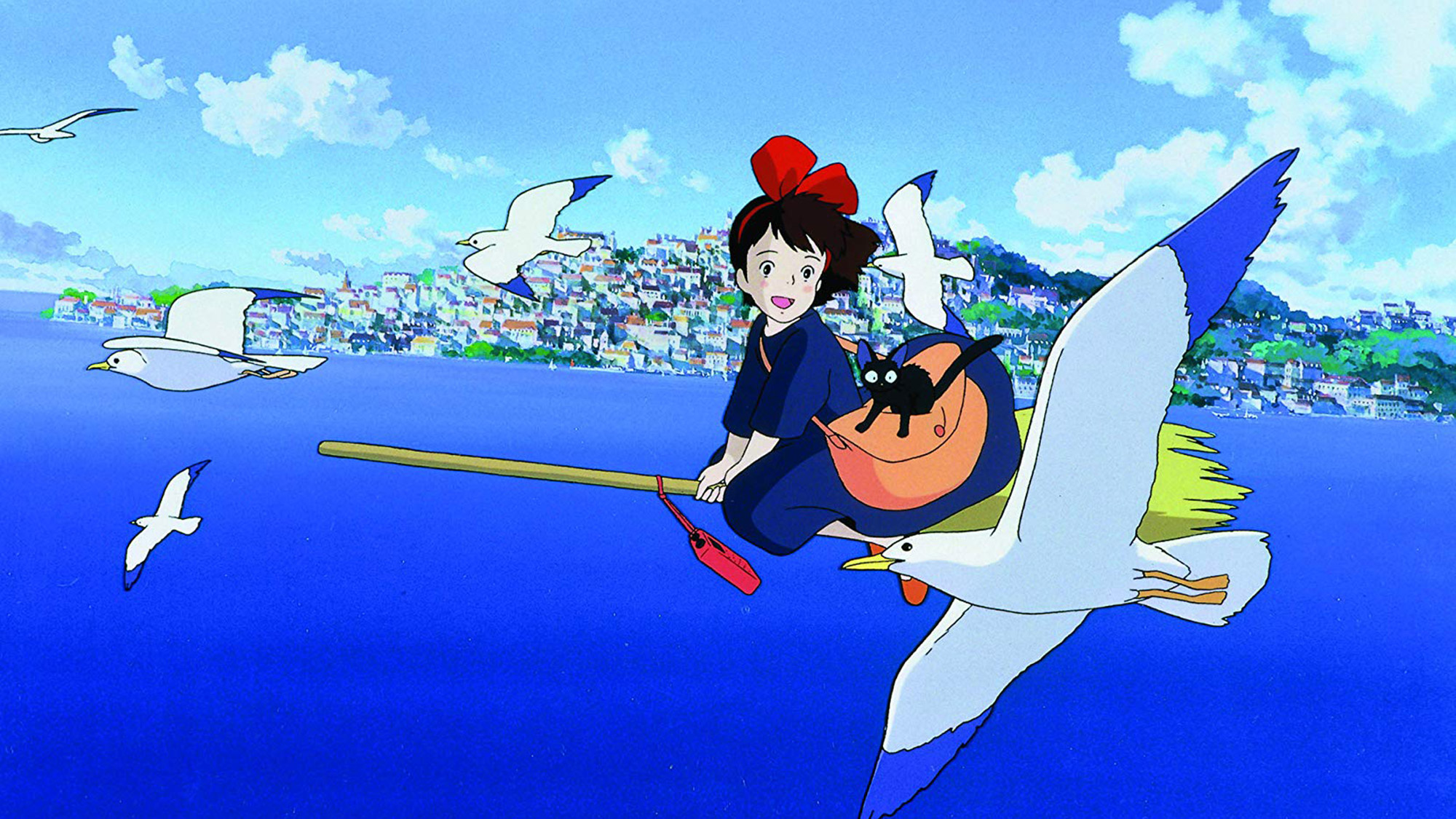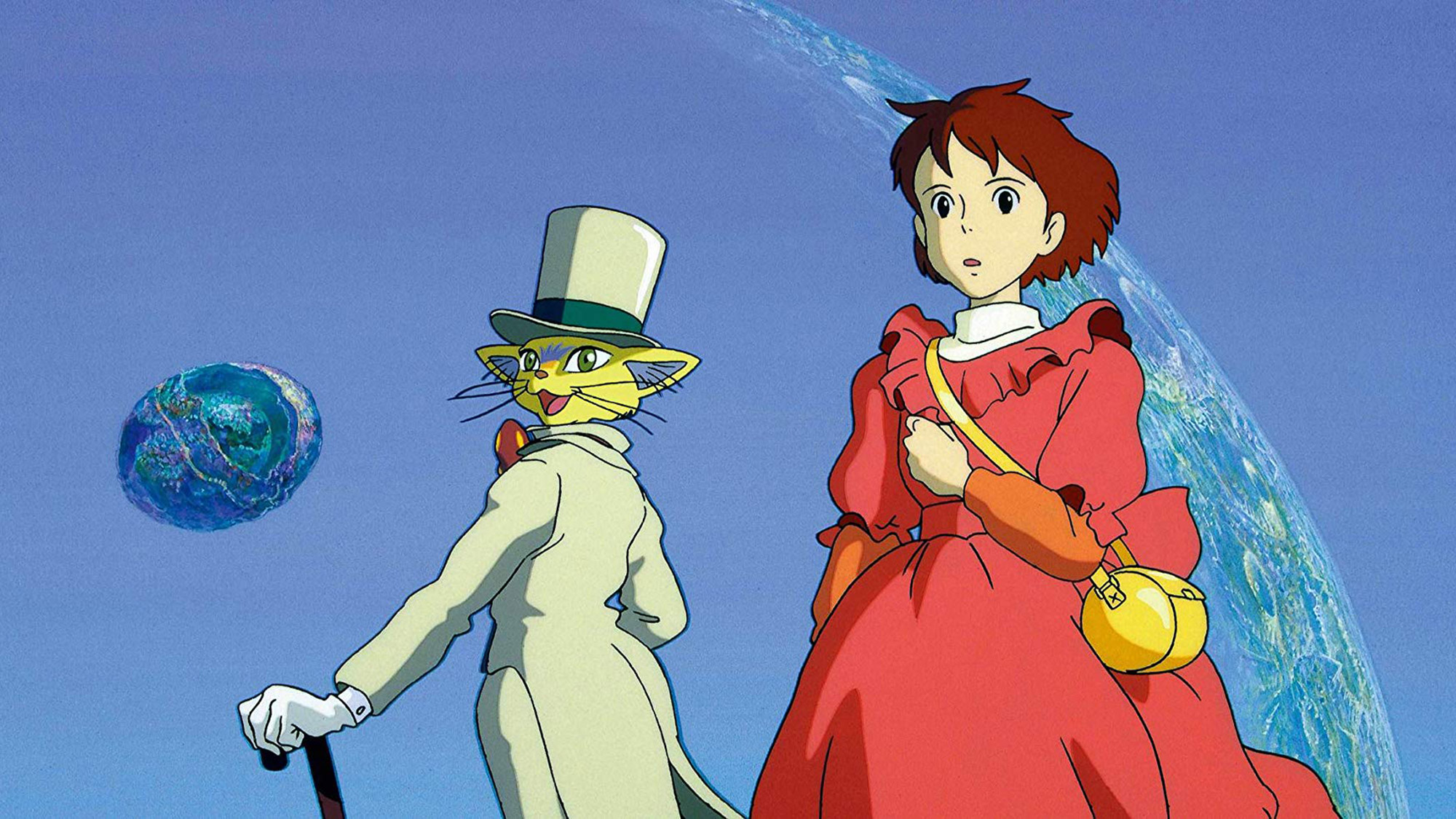The Best Studio Ghibli Movies
Experience the best of Studio Ghibli.

Studio Ghibli movies are some of the most breathtaking works of animation out there, wrapping universal lessons for adults and children within mesmerizing visuals and performances.
Many of these works have inspired generations of renowned directors such as John Lasseter (Toy Story) and Guillermo del Toro (The Shape of Water). Better yet, you'll soon have an easy way to stream them all, as all Studio Ghibli movies hit HBO Max mere weeks ago.
- How to watch Studio Ghibli movies online on Netflix, Hulu and HBO Max
Here are the best Studio Ghibli movies to watch now.
The Secret World of Arrietty
Why you can trust Tom's Guide
Little people called Borrowers coexist with humans, taking resources like sugar and tissue paper to survive. Residing within the childhood home of teenage protagonist Sho's mother, these borrowers perform gathering missions during the night to avoid being caught. Sho, during a visit to the home, spots Arrietty, one of the borrowers, who is on a mission to gather resources. The animation is lovely, and even though the secret-world trope isn't the most original, watching the relationship between Sho and these miniature people develop is quite interesting.

Ponyo
Forbidden from heading to the surface by her sea-wizard father Fujimoto, little fish Ponyo befriends a 5-year-old boy named Sosuke after using her magic to heal his wound. With her magic, Ponyo takes on the form of a young human girl to get closer to Sosuke. Although the story is charming and innocent, it has a lot to say about relationships and letting go. Underwater scenes are breathtaking and stand out among the familiar, fantastical rural locations to be found in other Studio Ghibli works.

The Tale of the Princess Kaguya
Found within a bamboo stalk, an infant Kaguya finds a home with an older couple. As she grows at an extraordinary rate and exhibits unworldly beauty, her father begins finding wealth in the forest in the form of gold nuggets. This newfound fortune helps the family move into a mansion within the capital of Japan. Various princes and finally the Emperor attempt to court Kaguya, but she comes to resent the strangeness of societal roles and a royal lifestyle she never asked for. The story has some pretty interesting reveals, such as Kaguya's origins, but the use of distinct Japanese line work and watercolor art style to reflect the protagonist's mental state helps this entry stand out among the rest.

The Cat Returns
Haru, a young girl, saves a cat from certain death by pushing it out of the path of an oncoming truck. The end. Or so Haru would hope, as she is whisked away to a feline kingdom and transformed into a cat. The cat she saved earlier in the film was Lune, Prince of the Cat Kingdom. The Cat King wants Haru to marry Lune, even though she wants to return to her world. Just like in Spirited Away, the protagonist is stuck in a race against the clock to find her true self and escape back to the real world before she loses who she really is.

Howl's Moving Castle
Howl's Moving Castle is an enchanting fable filled with strange twists and bursting with visuals. After Sophie, a young woman, is transformed into an old woman by an evil witch's curse, she sets out on an adventure to break the curse ailing her. During her escapade, she receives help from magician Howl, a magical man-bird who owns the walking castle pivotal to the plot. The focus on character emotions and visuals (the sense of scale in this title is some of the best in Studio Ghibli history) subtracts a bit from the plot, but Howl's Moving Castle is an overall fun journey from start to finish.

Pom Poko
For a film that's as lighthearted and comedic as Pom Poko is, this movie has an obscenely high death count. The story follows a united group of Japanese raccoon dogs with magical powers as they try to prevent human land developers from destroying their land. Juggling an upbeat tone with a real issue of environmental destruction, thanks to modern society, Pom Poko is less of a preachy eco fable and more grounded in reality, thanks to its real-world setting.

Porco Rosso
Italian fighter pilot Marco falls under a curse that replaces his face with that of a pig's, transforming him into the titular Porco Rosso (The Crimson Pig). In the midst of the Great Depression, Porco fights not only pirates but also a fascist government. Filled with painstakingly authentic details from 1930s planes, Italian architecture and machinery, Porco Rosso is a captivating film rounded out by a dynamic cast that evolves throughout the movie's hour and a half runtime.

Nausicaä of the Valley of the Wind
A nuclear war dubbed the Seven Days of Fire brings about an apocalypse. Humanity is left fighting over the few remaining natural resources 1,000 years later while also contending with gigantic insects that hail from a no-man's-land called the Toxic Jungle. Dramatic and incredibly stylish, Valley of the Wind is the last oasis for humans and is home to Princess Nausicaä, who searches for a way to coexist with the jungle inhabitants and to detoxify the world. This movie, which was released in 1984, marks the first time Joe Hisaishi composed a score for Studio Ghibli. Hisaishi has crafted some of the most beautiful tracks in Studio Ghibli's history and continues to work with the team today.

Kiki's Delivery Service
While a majority of Studio Ghibli's films are great for kids, Kiki's coming-of-age story is a feel-good movie for all ages that's easy to digest. Kiki, a witch who is a bit of a klutz, leaves home to become a delivery girl for a baker named Osono. Using her broomstick, Kiki's broomstick-delivery flying scenes are an absolute blast. The world is uncharacteristically normal for a Ghibli film, and there's really no major conflict. The audience walks away with a new perspective on growing up and appreciating the experiences that make up one's life.

Whisper of the Heart
A love story between a young female writer named Shizuku and aspiring violin maker Seiji, Whisper of the Heart follows Shizuku's path to write the perfect fantasy story. Seeing Shizuku work toward her goals with a youthful passion, thanks to Seiji's support, is incredibly rewarding. Rarely does a story focus on the awkward years between being a kid and an adult, but throughout the course of Whisper of the Heart, we see Shizuku fall and get back up, blossoming into a wise young woman. The hilly suburbs of Japan offer an immersive small-town feel, and other than a few whimsical visits into Shizuku's fantasy story world, the movie stays based in its coming-of-age reality.

Castle in the Sky
Steampunk airships and a floating castle make up Studio Ghibli's first official movie. With the floating castle of Laputa at risk of catastrophe, two orphans, Sheeta and Pazu, evade pirates and government officials in order to return Sheeta to her home and help Pazu prove that his father truly saw a castle in the sky. Action packed with plenty of plot beats that awe, Castle in the Sky set the standard for Ghibli classics and holds up well today.

My Neighbor Totoro
Empowered by imaginary friends that include chunky forest guardian Totoro and a smiling cat that moonlights as a bus, young sisters Satsuki and Mei overcome a series of hardships. From making an old countryside cottage their new home to being alienated from a hospital-ridden mother, the movie is filled with child-like imagery and taps into the experience of being a kid by portraying the girls' imagination and fears. This is the movie that features Totoro holding an umbrella in the rain, a signature image associated with Studio Ghibli.

Spirited Away
Spirited Away is probably the most well-known Studio Ghibli film stateside for a reason. Mixing action, drama and fantastical creatures like the strangely charming No-Face, witches and adorable little black soot creatures called susuwatari, the film has all of the signature elements of a Studio Ghibli film in a universal package for both kids and adults. Hayao Miyazaki's fantastical adventure centers on Chihiro, a 10-year-old girl trapped in the spirit world with monsters. To escape back to her realm, Chihiro must save her parents by diving deeper into the otherworld. This film won Miyazaki an Oscar, in part due to its enchanting story and killer soundtrack.

Princess Mononoke
Warrior Ashitaka and San, Princess of the Wolf Gods, unite to prevent calamity from the forest gods in Studio Ghibli's most exciting odyssey. Well-developed characters, expansive story showing multiple perspectives of war and fluid animation take center stage in this fantasy movie set in the Muromachi period of Japan. Viewers are treated to incredible set pieces as nature fights back against Lady Eboshi and her destructive expansion of Irontown. Unlike the family-friendly titles associated with the studio, Princess Mononoke is surprisingly violent, which gives every scene a level of impact that has failed to be reproduced by the others on the list.

Grave of the Fireflies
Grave of the Fireflies is basically the Schindler's List of anime films, complete with a tense atmosphere amid the devastation of World War II. Following the tormented journey of stubborn teenager Seita and his 4-year-old sister Setsuko, the two siblings rely on each other to survive after their parents are killed during the war. A perfect blend of emotional scoring with beautiful hand-drawn animation, this Ghibli film uses the studio's unique styling abilities to tell a powerful story that conveys emotions hard to stir up in other mediums. But when you start watching, just be aware that this isn't a feel-good children's film; rather, it's filled with unrelenting sorrow from the start — one of the reasons that this masterpiece is rarely ranked higher in many of today's Ghibli films rankings. While some critics have stated that they find the film manipulative, the plot is grounded in reality, and it's rife with conflicts both internal and external, in addition to memorable scenes that stick with viewers long after they see the film.
Sign up to get the BEST of Tom's Guide direct to your inbox.
Get instant access to breaking news, the hottest reviews, great deals and helpful tips.

Hunter Fenollol is a Senior Editor for Tom’s Guide. He specializes in smart home gadgets and appliances. Prior to joining the team, Hunter reviewed computers, wearables, and mixed reality gear for publications that include CNN Underscored, Popular Mechanics, and Laptop Magazine. When he’s not testing out the latest cooking gadgets, you can likely find him playing a round of golf or out with friends feeding his paycheck to a QuickHit slot machine. Hunter started his career as an intern at Tom’s Guide back in 2019 while in college. He graduated from Long Island University Post with a degree in Communications and minor in Advertising. He has been vlogging ever since the iPhone 4 took front-facing cameras mainstream.
